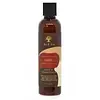What's inside
What's inside
 Key Ingredients
Key Ingredients

No key ingredients
 Benefits
Benefits

 Concerns
Concerns

 Ingredients Side-by-side
Ingredients Side-by-side

Water
Skin ConditioningCetearyl Alcohol
EmollientCetyl Alcohol
EmollientCocos Nucifera Fruit Extract
EmollientPhyllanthus Emblica Fruit Extract
HumectantBeta Vulgaris Root Extract
Skin ConditioningPhytosterols
Skin ConditioningSerenoa Serrulata Fruit Extract
Skin ConditioningCamellia Sinensis Leaf Extract
AntimicrobialGlycerin
HumectantPyrus Malus Fruit Extract
Skin ConditioningCitrus Limon Peel Extract
EmollientSaccharum Officinarum Extract
MoisturisingBetaine
HumectantBehentrimonium Methosulfate
Stearamidopropyl Dimethylamine
EmulsifyingCitric Acid
BufferingPhenoxyethanol
PreservativeCaprylyl Glycol
EmollientPotassium Sorbate
PreservativePolyacrylamide
Parfum
MaskingAnise Alcohol
PerfumingCoumarin
PerfumingLimonene
PerfumingWater, Cetearyl Alcohol, Cetyl Alcohol, Cocos Nucifera Fruit Extract, Phyllanthus Emblica Fruit Extract, Beta Vulgaris Root Extract, Phytosterols, Serenoa Serrulata Fruit Extract, Camellia Sinensis Leaf Extract, Glycerin, Pyrus Malus Fruit Extract, Citrus Limon Peel Extract, Saccharum Officinarum Extract, Betaine, Behentrimonium Methosulfate, Stearamidopropyl Dimethylamine, Citric Acid, Phenoxyethanol, Caprylyl Glycol, Potassium Sorbate, Polyacrylamide, Parfum, Anise Alcohol, Coumarin, Limonene
Water
Skin ConditioningDimethicone
EmollientCetearyl Alcohol
EmollientNeopentyl Glycol Diethylhexanoate
EmollientIsopentyldiol
HumectantGlycine Soja Sterols
EmollientDihydroxymethylsilylpropoxy Hydroxypropyl Hydrolyzed Casein
Skin ConditioningIsodecyl Neopentanoate
EmollientPEG-12 Dimethicone
Skin ConditioningMaltitol
HumectantArginine
MaskingGlycine
BufferingAspartic Acid
MaskingSerine
MaskingThreonine
Valine
MaskingAlanine
MaskingProline
Skin ConditioningPhenylalanine
MaskingIsoleucine
Skin ConditioningHistidine
HumectantPCA
HumectantSodium PCA
HumectantSodium Lactate
BufferingSorbitol
HumectantPPG-10 Methyl Glucose Ether
Skin ConditioningPhenyl Trimethicone
Skin ConditioningBehentrimonium Methosulfate
Butylene Glycol
HumectantHydroxypropyl Methylcellulose Stearoxy Ether
Glyceryl Stearate
EmollientCetrimonium Chloride
AntimicrobialCitric Acid
BufferingDisodium EDTA
Phenoxyethanol
PreservativeWater, Dimethicone, Cetearyl Alcohol, Neopentyl Glycol Diethylhexanoate, Isopentyldiol, Glycine Soja Sterols, Dihydroxymethylsilylpropoxy Hydroxypropyl Hydrolyzed Casein, Isodecyl Neopentanoate, PEG-12 Dimethicone, Maltitol, Arginine, Glycine, Aspartic Acid, Serine, Threonine, Valine, Alanine, Proline, Phenylalanine, Isoleucine, Histidine, PCA, Sodium PCA, Sodium Lactate, Sorbitol, PPG-10 Methyl Glucose Ether, Phenyl Trimethicone, Behentrimonium Methosulfate, Butylene Glycol, Hydroxypropyl Methylcellulose Stearoxy Ether, Glyceryl Stearate, Cetrimonium Chloride, Citric Acid, Disodium EDTA, Phenoxyethanol
 Reviews
Reviews

Ingredients Explained
These ingredients are found in both products.
Ingredients higher up in an ingredient list are typically present in a larger amount.
Behentrimonium Methosulfate is an ammonium salt. It is mainly used to prevent static in haircare products as a surfactant.
Surfactants have differing ends: one side is hydrophilic while the other end is hydrophobic.
Surfactants also help your cleansers remove pollutants more easily from the skin.
Learn more about Behentrimonium MethosulfateCetearyl alcohol is a mixture of two fatty alcohols: cetyl alcohol and stearyl alcohol. It is mainly used as an emulsifier. Emulsifiers help prevent the separation of oils and products. Due to its composition, it can also be used to thicken a product or help create foam.
Cetearyl alcohol is an emollient. Emollients help soothe and hydrate the skin by trapping moisture.
Studies show Cetearyl alcohol is non-toxic and non-irritating. The FDA allows products labeled "alcohol-free" to have fatty alcohols.
This ingredient is usually derived from plant oils such as palm, vegetable, or coconut oils. There is debate on whether this ingredient will cause acne.
Due to the fatty acid base, this ingredient may not be Malassezia folliculitis safe.
Learn more about Cetearyl AlcoholCitric Acid is an alpha hydroxy acid (AHA) naturally found in citrus fruits like oranges, lemons, and limes.
Like other AHAs, citric acid can exfoliate skin by breaking down the bonds that hold dead skin cells together. This helps reveal smoother and brighter skin underneath.
However, this exfoliating effect only happens at high concentrations (20%) which can be hard to find in cosmetic products.
Due to this, citric acid is usually included in small amounts as a pH adjuster. This helps keep products slightly more acidic and compatible with skin's natural pH.
In skincare formulas, citric acid can:
While it can provide some skin benefits, research shows lactic acid and glycolic acid are generally more effective and less irritating exfoliants.
Most citric acid used in skincare today is made by fermenting sugars (usually from molasses). This synthetic version is identical to the natural citrus form but easier to stabilize and use in formulations.
Read more about some other popular AHA's here:
Learn more about Citric AcidPhenoxyethanol is a preservative that has germicide, antimicrobial, and aromatic properties. Studies show that phenoxyethanol can prevent microbial growth. By itself, it has a scent that is similar to that of a rose.
It's often used in formulations along with Caprylyl Glycol to preserve the shelf life of products.
Water. It's the most common cosmetic ingredient of all. You'll usually see it at the top of ingredient lists, meaning that it makes up the largest part of the product.
So why is it so popular? Water most often acts as a solvent - this means that it helps dissolve other ingredients into the formulation.
You'll also recognize water as that liquid we all need to stay alive. If you see this, drink a glass of water. Stay hydrated!
Learn more about Water